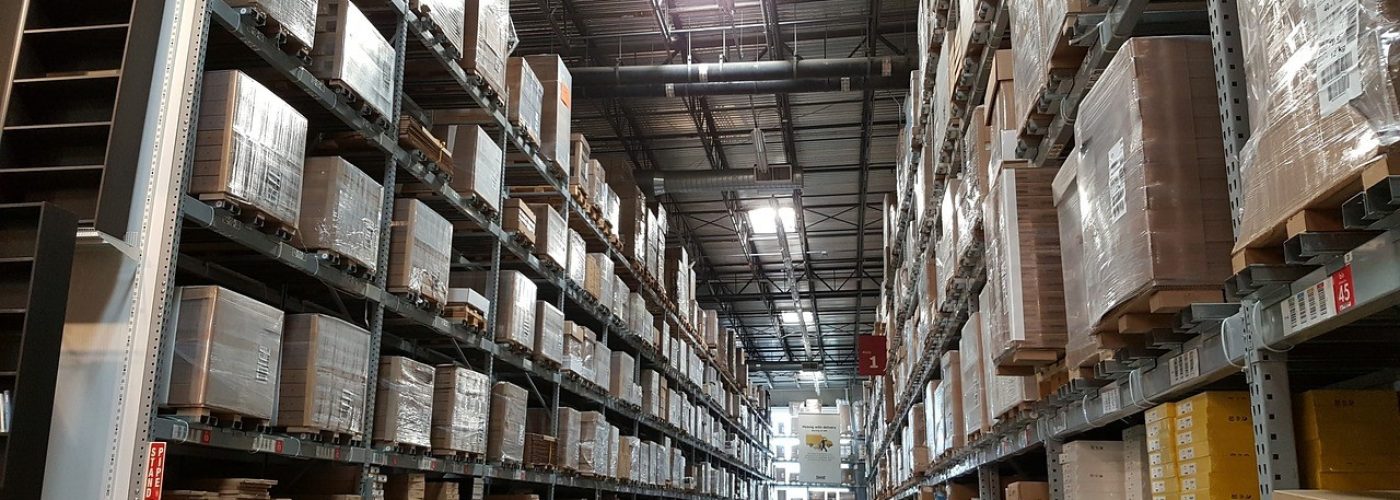In the management of warehouses, it is important to be aware of the dangers that could occur at the workplace. It is easy to be lenient with these risks, especially when there hasn’t been an incident in a while.
Although there have been technological advancements and the use of automated devices has become widespread, warehouses still heavily rely on human workers.
Because of this, warehouse managers need to prioritize the staff’s safety and well-being.
In this article, we will explore the major causes of warehouse accidents and provide practical solutions to prevent them.
Common Causes of Warehouse Accidents
Slips, Trips, and Falls
A study by the US Department of Labor showed that 25% of workplace injuries are caused by falls and slips.
Warehouses become hazardous when water seeps in through a leaky roof or liquid spills on the floor accidentally. This creates slippery surfaces that pose a risk to workers.
Water is not the only source of concern; spilled oil or chemicals can make the situation more dangerous.
Falling Objects
As businesses expand, there’s often a rush to utilize every inch of warehouse space.
This haste can result in haphazard stacking and overloading of shelves. A minor disturbance or a weak shelf can send products crashing down.
Periodic shelf inspections and adhering to load recommendations are essential.
Forklift Accidents
With their robust engines and piercing forks, these vehicles are indispensable yet potentially deadly.
Forklift safety videos and operation courses are essential tools you can utilize to prevent accidents.
A distracted operator or a minor mechanical fault can lead to significant accidents. Having clear forklift lanes, installing warning lights, and rigorous operator training can greatly reduce these risks.
Poor Ergonomics
The design of a worker’s space can have a profound impact on their health.
Continual lifting, bending, or reaching awkwardly strains the body over time, possibly leading to chronic conditions.
Regular ergonomic assessments, providing adjustable workstations, and training in safe lifting techniques are essential.
Electrical and Fire Hazards
Electrical malfunctions aren’t just about flickering lights. They can sometimes spark fires, especially when flammable materials are poorly stored nearby.
Routine electrical system checks, coupled with a robust fire response system (including sprinklers and accessible fire extinguishers), can help prevent disasters.
Chemical Spills and Exposures
Some warehouses store chemicals, and some of them can be volatile. When these substances leak or mix, they can produce toxic fumes or even explode.
Chemical safety training, proper labeling, and having spill cleanup kits accessible can counteract these dangers.
Lack of Proper Training and Communication
Assumptions are dangerous. Assuming a worker knows how to operate machinery or handle chemicals, it can be catastrophic.
Regular refresher courses, language-specific instructions, and open channels for raising concerns are essential.
Insufficient Lighting and Signage
Dimly lit corners or blindingly bright lights can both lead to accidents.
Proper, even lighting, especially in areas with vehicle traffic or intricate manual tasks, should be made available.
High-visibility signage, possibly even with reflective or luminescent properties, can guide workers safely.
Inadequate Personal Protective Equipment (PPE)
PPE, from safety goggles to steel-toed boots, acts as the last line of defense against accidents.
Management should not only provide quality PPE but also strictly enforce its use. Regular audits can help in this regard.
Congestion and Clutter
A cluttered warehouse isn’t just an eyesore; it’s a hazard. Boxes stacked in aisles, misplaced pallets, or even abandoned equipment can lead to trips, falls, or obstructions in emergencies.
Implementing lean warehouse principles and frequent decluttering drives can transform chaos into order.
Proactive Measures to Prevent Warehouse Accidents
Regular Safety Audits and Inspections
Third-party inspections can offer an external perspective on potential hazards, as they are free of internal biases.
These audits, complemented by internal checks, ensure a holistic safety approach.
Comprehensive Training Programs
Beyond initial orientation, periodic safety workshops, emergency drills, and even gamified safety challenges can keep safety at the forefront of every worker’s mind.
Clear Signage and Communication
Using technology, such as digital sign boards for IoT devices that alert workers about hazards, can be game-changers.
Furthermore, monthly safety briefings ensure everyone is on the same page.
Mandatory Use and Availability of PPE
Regular spot-checks, incentives for consistent PPE use, and quick replacements for damaged equipment ensure that workers are always protected.
Emphasizing Cleanliness and Organization
The Japanese concept of ‘5S’ (Sort, Set in order, Shine, Standardize, Sustain) can be a guiding principle, ensuring that everything has a place and clutter is minimized.
Ergonomic Solutions and Workstation Design
Incorporating feedback from workers, introducing tools like lifting belts, and ensuring regular breaks can promote ergonomic health.
Equipment Maintenance and Certification
A logbook for each significant piece of equipment, recording its maintenance schedule and any faults, may be quite useful.
This method guarantees that interventions are made before breakdowns occur.
Robust Emergency Protocols
Clear, illuminated escape routes, frequent evacuation drills, and accessible emergency medical kits can make the difference between a minor incident and a tragedy.





